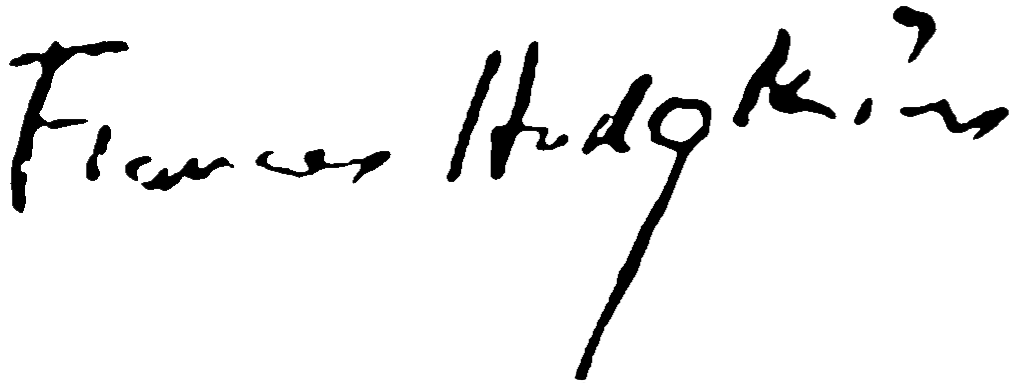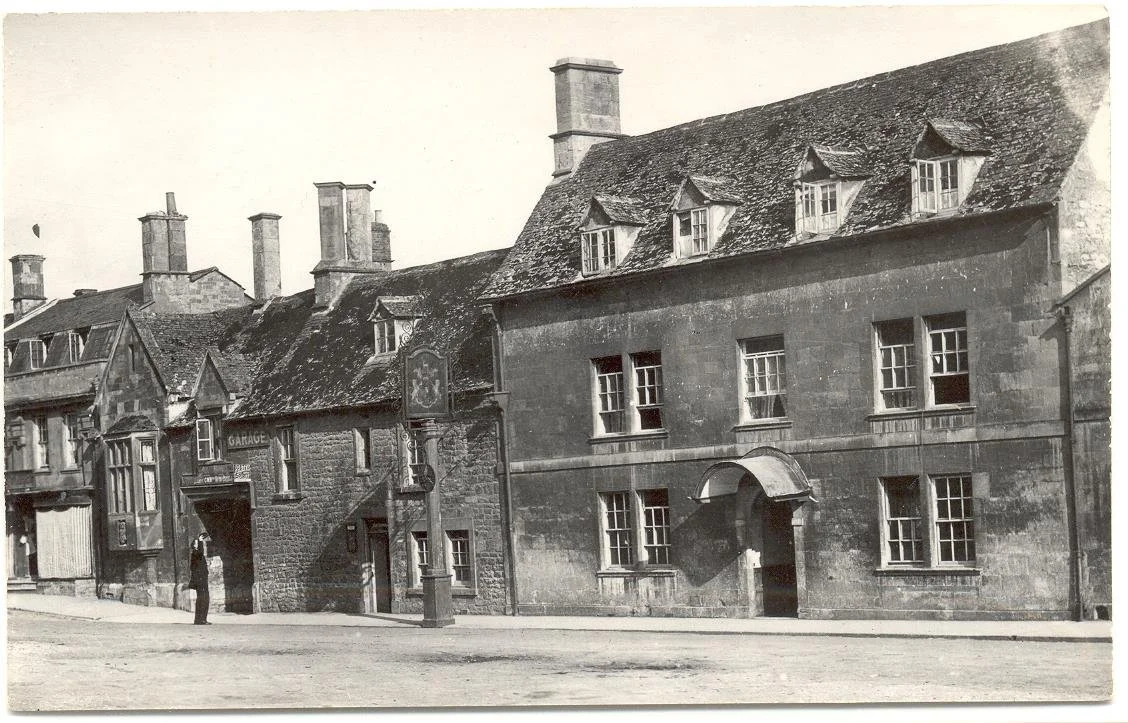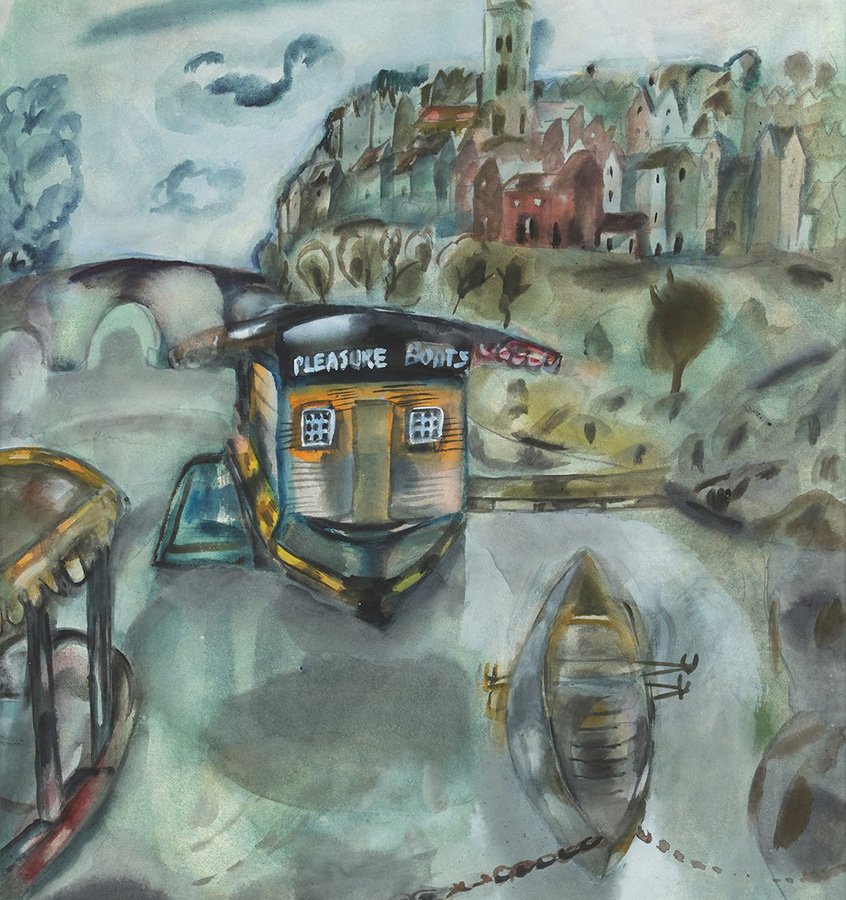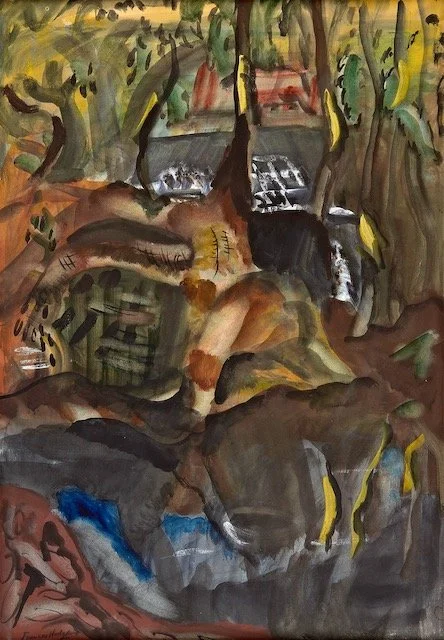In the summer of 1916 Frances Hodgkins set out in search of a suitable village from which to set up and give some painting classes. Basing herself in the small town of Evesham, she explored nearby villages on a hired bicycle, finally deciding upon the quaint market town of Chipping Campden in Gloucestershire.
Above: Noel Arms, early 1900s, Jesse Taylor Collection
Hodgkins took accommodation at the historic Noel Arms Hotel, where Charles II is said to have rested after his defeat by Cromwell at the battle of Worcester. She wrote to her mother on June 22nd: ... After a hot climb up the Cotswolds I found this place as dear a little grey town as you could wish to see & such a nice Inn & landlady who understands our temperament & feeds us well & simply.12
By July Hodgkins was kept busy with a ‘thriving’ class and the promise of greater numbers in August. Not much time to spare these days. I am on the go early and late ... I have a cold bath at 6.30, get my letters & answer them before breakfast, when we all assemble to discuss the order of the day - then out till 1. o'c, after lunch a siesta & again to work after an early tea - dinner at 7.30.3
However, in August she began to grow tired, writing of her pupils: They are a dull lot of human beings, & I ... curse secretly at having to lay out so much strength & energy into such unpromising material.4 By September she was ‘brain fagged’ with ‘nothing left in the reservoir’ and was very much looking forward to saying goodbye to her students.
Frances Mary Hodgkins c. 1920
In a letter to her mother dated September 9th, Frances wrote of finally being able to take time and finish her paintings for an upcoming exhibition: A short line to say I am well but very busy finishing off pupils who depart tomorrow ... I stay on till the end of the month finishing my picture for the International, then back to St Ives ... The country is looking sweet now - the horrible greens has gone ... I am on a large picture of bathing boys. There is a pool in one of the fields, rather public, & I have to dodge the villagers & especially the Superintendent of Police who suspects I have some stunt up my sleeve not quite. I bribe the boys to bathe at 1/- a head & buns all round - I have to go like the wind for fear of being caught, but I have nearly finished now. The pool is really rather a mud hole & full of rats, but it has a lovely old, ruined gateway near it & makes a pretty picture for a pastoral.5 Frances Hodgkins held her painting classes in Chipping Campden that year 1916 from June to October, then the following year 1917 she was in Burford between June and July, in Great Barrington in the Summer of 1919, returning to Burford between 1921 – 1923.
Juliana’s Gateway 1908
The painting referred to by Hodgkins is the lively Lady Juliana's Gateway, see below. On a past trip to the UK, the author, having walked over three fields and waded through two brooks, found the ruined gateway. His resulting photograph is shown below, alongside Hodgkins' watercolour
Frances Hodgkins’s 1916 painting, Lady Juliana's Gateway. Private Collection, Auckland, NZ
Essay published in: Signpost - Chipping Campden History Society
The ‘old, ruined gateway’ present day












